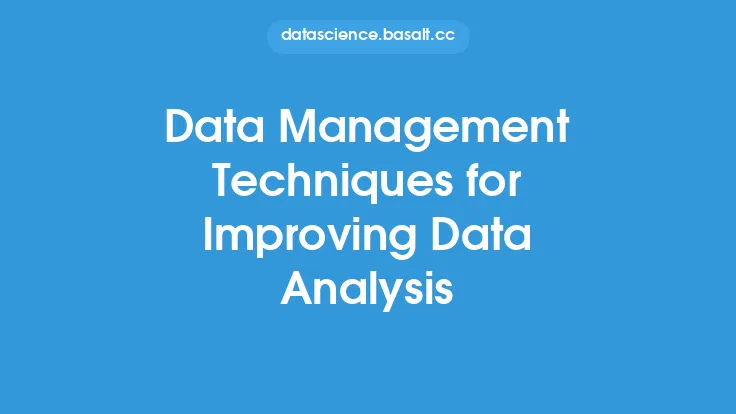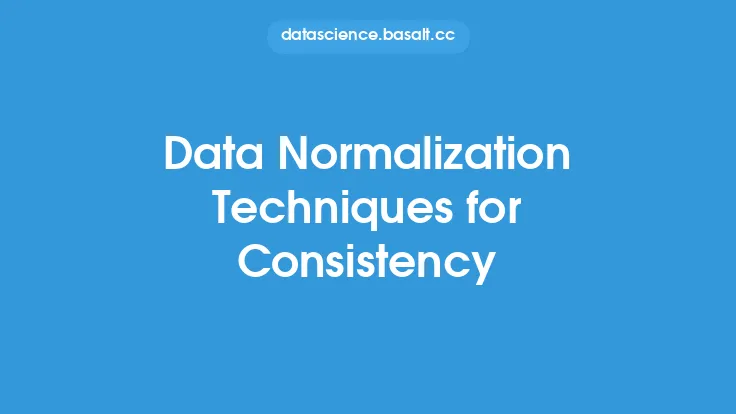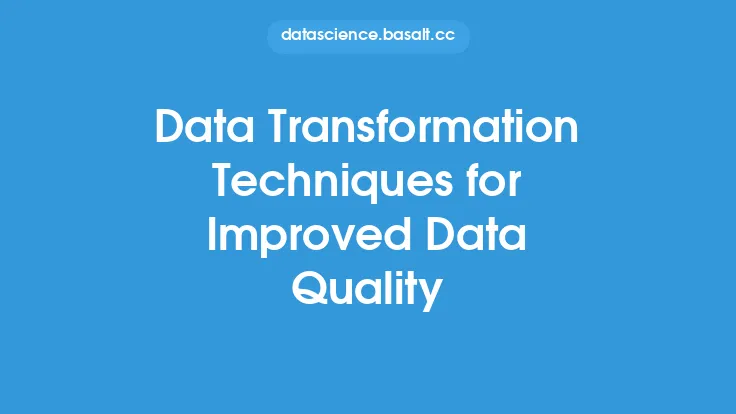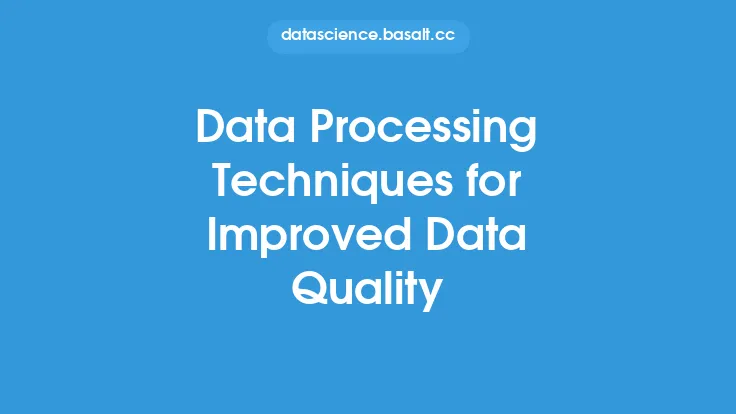Data cleaning is a crucial step in the data preprocessing phase of data mining, as it directly affects the accuracy and reliability of the analysis results. The primary goal of data cleaning is to identify and correct errors, inconsistencies, and inaccuracies in the data, ensuring that it is reliable, consistent, and usable for analysis. In this article, we will delve into the various data cleaning techniques used to achieve accurate analysis.
Introduction to Data Cleaning
Data cleaning involves a series of processes that detect and correct errors, handle inconsistencies, and transform the data into a usable format. The data cleaning process typically begins with data profiling, which involves analyzing the data to identify patterns, relationships, and anomalies. This step helps to identify potential errors, inconsistencies, and areas that require special attention. Data cleaning techniques can be broadly categorized into two types: automatic and manual. Automatic data cleaning techniques use algorithms and statistical methods to detect and correct errors, while manual data cleaning techniques rely on human judgment and expertise.
Handling Inconsistent Data
Inconsistent data can arise from various sources, including data entry errors, differences in data formats, and inconsistencies in data coding. Handling inconsistent data is a critical step in data cleaning, as it can significantly impact the accuracy of the analysis results. One common technique used to handle inconsistent data is data standardization, which involves converting data into a standard format to ensure consistency. For example, date fields can be standardized to a specific format, such as YYYY-MM-DD, to ensure that all dates are represented consistently. Another technique used to handle inconsistent data is data validation, which involves checking the data against a set of predefined rules to ensure that it is accurate and consistent.
Removing Duplicate Records
Duplicate records can arise from various sources, including data entry errors, data integration, and data migration. Removing duplicate records is an essential step in data cleaning, as it can significantly impact the accuracy of the analysis results. One common technique used to remove duplicate records is the use of unique identifiers, such as primary keys or unique IDs. Another technique used to remove duplicate records is data deduplication, which involves using algorithms to identify and remove duplicate records based on a set of predefined criteria.
Handling Outliers and Anomalies
Outliers and anomalies can significantly impact the accuracy of the analysis results, as they can skew the results and lead to incorrect conclusions. Handling outliers and anomalies is a critical step in data cleaning, as it requires careful consideration and expertise. One common technique used to handle outliers and anomalies is data transformation, which involves transforming the data to reduce the impact of outliers and anomalies. For example, logarithmic transformation can be used to reduce the impact of extreme values. Another technique used to handle outliers and anomalies is data trimming, which involves removing a portion of the data to reduce the impact of outliers and anomalies.
Data Quality Checks
Data quality checks are an essential step in data cleaning, as they help to identify errors, inconsistencies, and inaccuracies in the data. Data quality checks can be performed using various techniques, including data profiling, data validation, and data verification. Data profiling involves analyzing the data to identify patterns, relationships, and anomalies, while data validation involves checking the data against a set of predefined rules to ensure that it is accurate and consistent. Data verification involves checking the data against an external source to ensure that it is accurate and reliable.
Automated Data Cleaning Tools
Automated data cleaning tools are software applications that use algorithms and statistical methods to detect and correct errors, handle inconsistencies, and transform the data into a usable format. Automated data cleaning tools can significantly reduce the time and effort required for data cleaning, as they can perform tasks quickly and efficiently. However, automated data cleaning tools require careful consideration and expertise, as they can also introduce errors and inconsistencies if not used properly. Some common automated data cleaning tools include data quality software, data integration software, and data transformation software.
Best Practices for Data Cleaning
Best practices for data cleaning involve a series of steps that help to ensure that the data is accurate, consistent, and reliable. One best practice for data cleaning is to document the data cleaning process, which involves keeping a record of all the steps performed during data cleaning. Another best practice for data cleaning is to use data quality metrics, which involve measuring the quality of the data using metrics such as accuracy, completeness, and consistency. Data quality metrics can help to identify areas that require special attention and ensure that the data is accurate and reliable.
Conclusion
Data cleaning is a critical step in the data preprocessing phase of data mining, as it directly affects the accuracy and reliability of the analysis results. The various data cleaning techniques, including handling inconsistent data, removing duplicate records, handling outliers and anomalies, data quality checks, automated data cleaning tools, and best practices for data cleaning, can help to ensure that the data is accurate, consistent, and reliable. By using these techniques and following best practices, data analysts can ensure that their analysis results are accurate and reliable, and that they can make informed decisions based on high-quality data.





